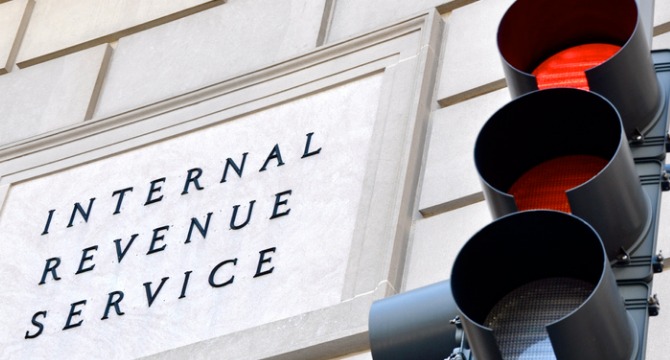
While not exactly a Thanksgiving “miracle,” many retirement plan sponsors were no doubt thankful for the IRS’ recent issuance of proposed regulations (the “Proposed Regs”) addressing changes to the Code §401(k) and 403(b) plan hardship withdrawal rules enacted as part of the Bipartisan Budget Act of 2018 (the “Act”). The Proposed Regs answer several questions raised by the Act, and provide plan sponsors with significant flexibility in how (and when) they implement the changes.
Hardship Withdrawals, Generally
Code §401(k) and 403(b) plan sponsors may, but are not required to, permit participants to request in-service distributions if they: (i) have an “immediate and heavy financial need,” and (ii) lack the financial resources to satisfy that need. Certain types of expenses (such as medical care expenses; post-secondary education expenses; funeral expenses; and expenses incurred in purchasing a home, avoiding eviction, or making repairs following a “casualty loss”) are viewed as “safe harbors,” deemed to constitute an immediate and heavy financial need for the participant, his/her spouse, dependents, or beneficiaries.
The Act’s Changes
Before the Act’s passage, requesting a hardship withdrawal came with significant “strings.” To receive a hardship withdrawal, participants had to take all available plan loans and were prohibited from making elective deferrals for at least six months following its receipt. This made it difficult for participants to replace withdrawn funds, potentially reducing the amounts available to them for retirement. The Act eliminated these restrictions.
In addition, before the Act, participants could take hardship distributions from their elective deferrals, but not from earnings on those deferrals (except in very limited cases). Nor could employer corrective contributions (i.e., qualified nonelective contributions (“QNECs”) or qualified matching contributions (“QMACs”), and safe harbor contributions be used for hardship distributions, even though participants are always 100 percent vested in those contributions. To varying degrees, the Act lifts these restrictions on Code §401(k) and 403(b) plans, expanding the contribution sources available for hardship withdrawals.
The Act also revised the safe harbor expenses deemed to constitute immediate and heavy financial needs for hardship withdrawal purposes.
The Proposed Regulations
Unfortunately, the exact scope of the Act’s changes was not clear in all cases. The Proposed Regs provide plan sponsors with guidance for implementing the Act’s requirements, and are generally effective for distributions made on or after January 1, 2019.
Plan Loans and Suspension of Elective Deferrals. Under the Proposed Regs, plan sponsors may require participants to first obtain any available plan loans in order to receive a hardship withdrawal, but are no longer required to do so. Because requiring participants to take plan loans may itself constitute a hardship for some participants, we suspect many plan sponsors will drop the requirement.
The Proposed Regs do not give plan sponsors the same discretion when it comes to eliminating the 6-month suspension on elective deferrals imposed on participants after the receipt of a hardship withdrawal, but do give sponsors time to implement it. Though plan sponsors may eliminate the 6-month suspension effective for plan years beginning on or after January 1, 2019, in no case can it be imposed on participants who take hardship distributions on or after January 1, 2020.
The Proposed Regs also permit (but do not require) plan sponsors to eliminate the 6-month suspension period effective as of the first day of a plan year beginning on or after January 1, 2019, even if the suspension began in an earlier year. For example, if the sponsor of a calendar year plan adopted this approach, a participant whose elective deferrals were suspended due to the receipt of a hardship withdrawal in October 2018 could make elective contributions again beginning January 1, 2019.
Expanded Contribution Sources. The Proposed Regs permit, but do not require, Code §401(k) and 403(b) plan sponsors to amend their plans to permit participants to take hardship withdrawals from safe harbor employer contributions (both matching and nonelective contributions).
Code §401(k) plan sponsors may also amend their plans to allow participants to request hardship distributions from the earnings on their elective deferral contributions, and from any QMACs or QNECs they may have received. Code §403(b) plan participants cannot take hardship distributions from earnings on Code §403(b) elective deferrals or from QMACs or QNECs held in custodial accounts. If the plan sponsor permits it, however, they may take hardship distributions from QMACs and QNECs held in annuities or other non-custodial accounts.
Deemed Hardship Expenses. The Tax Cuts and Jobs Act of 2017 amended Code §165 to permit the personal deduction of casualty losses only if such losses are attributable to a federally-declared disaster. The Proposed Regs clarify that, notwithstanding that change, expenses incurred by a plan participant to repair damage to his/her personal residence, regardless of whether the damage was the result of a federally-declared disaster, will be deemed to constitute an immediate and heavy financial need for the participant.
In addition, the Proposed Regs specifically treat expenses and losses (including loss of income) incurred by a participant on account of a federally-declared disaster as a safe harbor constituting an immediate and heavy financial need. This will allow plan sponsors to more quickly approve hardship distributions for participants affected by such disasters, without the need for special IRS approval. This new safe harbor may be applied to distributions occurring on or after January 1, 2018, and specifically extends to plan participants affected by Hurricanes Florence and Michael.
Proof of Hardship. Under the current hardship withdrawal regulations, the determination of whether a distribution is necessary to satisfy a participant’s immediate financial need is based on all relevant facts and circumstances. The Proposed Regs streamline this determination, applying the following standards:
- A hardship distribution may not exceed the amount necessary to satisfy the participant’s financial need (including any taxes or penalties arising due to the distribution);
- The participant must have obtained all other currently available distributions from the plan and other deferred compensation plans (whether qualified or nonqualified); and
- For distributions made on or after January 1, 2020, the participant must represent (whether in writing, electronically, or as otherwise permitted by the IRS), that he/she has insufficient liquid assets to satisfy the financial need.
* * *
While the Proposed Regs do not specifically state that they may be immediately relied upon, most commentators do not expect the IRS to make many changes before they are finalized. Employers hoping to incorporate the changes into their plans in 2019 should consult with their counsel and third-party administrators now to determine what amendments are necessary and how quickly any changes can be implemented.
